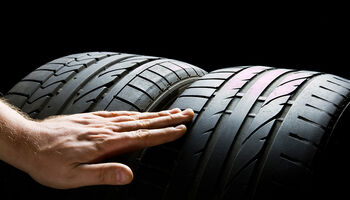CHOOSING SUMMER TIRES: WHY AND BY WHAT PARAMETERS
Summer car tires must be fitted seasonally. When and why it needs to be done - every car owner should know. If there is a question of choosing rubber for the warm season, you need to take into account a number of parameters on which safety, vehicle controllability and the service life of the chassis elements depend.
WHY CHANGE WINTER TIRES TO SUMMER TIRES
Summer automobile tires differ from winter ones in a number of parameters: tread pattern, material composition and smoothness of the working surface. Winter stingrays are characterized by the following properties:
• softness of the base;
• preservation of elasticity at low temperatures;
• porosity and roughness of the tread;
• increased tread depth from 8 to 10 mm.
Summer tires, on the other hand, are stiffer and more resistant to wear and tear. The tread is characterized by larger sipes, and the working surface is smooth. Rubber is able to withstand high temperatures for a long time in summer with slow wear. The tread height of these tires is up to 8 mm. It is necessary to change winter tires to summer tires and vice versa for a number of reasons:
1. At a temperature of +7 ° C, the properties of both types of tires deteriorate.
2. When the ambient temperature drops to +5 ° C, the stiffness of summer slopes increases, which negatively affects traction with the road surface, as a result of which the risk of skidding increases.
3. When the temperature rises to +10 ° C, the properties of winter tires deteriorate significantly. The material of the tires becomes soft and the vehicle becomes unstable. In addition, the noise level increases, and the tread wears out much faster.
HOW TO CHOOSE SUMMER TIRES FOR A CAR
With the arrival of heat, the issue of choosing summer tires is of interest to many car owners. In order for the purchase of skates to be correct, a number of characteristics and operating conditions of the vehicle must be taken into account.
STANDARD SIZE
Before you buy summer tires, you need to find out which size is suitable for your car according to the recommendations of the automaker. Usually, these data can be found on the website or in service centers for your car brand. The standard size consists of several parameters:
• height;
• width;
• diameter.
Choosing rubber by size, you need to understand that the profile of the tire is a relative value. Therefore, it will not be possible to choose tires with a larger width and retaining the profile height, since it always increases in direct proportion to the width. In addition, you need to carefully consider the landing size: the wrong parameter will not allow the tire to fit on the disc.
According to the profile height, rubber is divided into three types:
• low profile (≤ 55%);
• high profile (60–75%);
• full-profile (≥ 82%).
A machine with low profile slopes has good handling but is also highly susceptible to road bumps.
The high profile makes the handling more difficult, but the car is softer on the flaws of the road. If there are no profile markings on the tire, then you have a rubber with an indicator of 80-82%. Such tires, by analogy with high-profile tires, provide a soft ride and good handling at high speeds. To know more click the button below.



